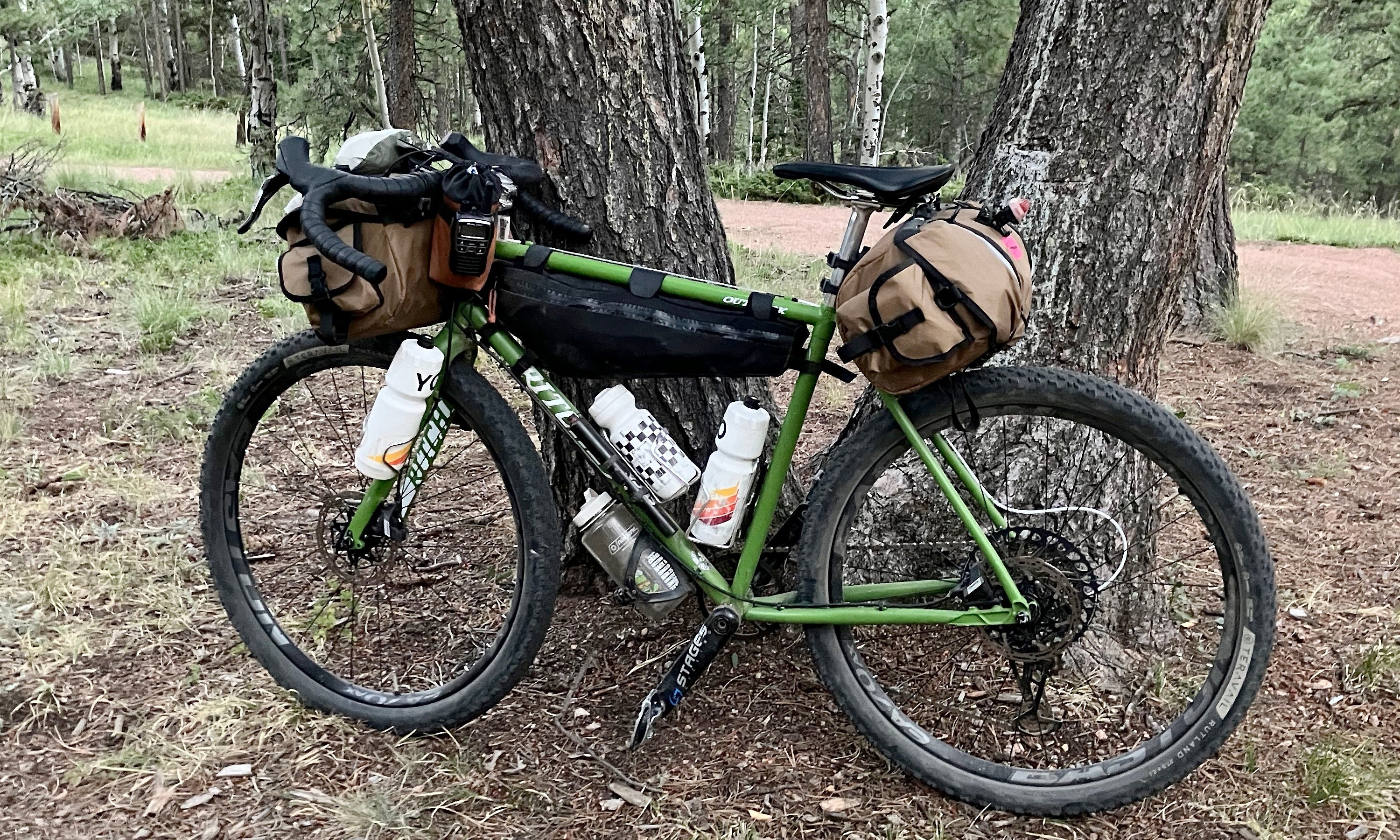Gravel suspension forks have gotten a lot of buzz in the last six months, between the RockShox Rudy fork and Fox 32 TC, which were recently unveiled. I’ve ridden a Rudy and it works quite well. The Fox 32 TC seems like a worthy entry as well. Bravo, suspension wizards. You’ve found a way to downsize MTB technology to work well with a drop-bar bike.
The thing is, back in 2016, some clever folks in Iceland also found a way to suspend the front wheel of gravel bike. And they did it without any air springs, hydraulic damping, seals, sliders, or adjuster knobs.
A Lauf Grit SL fork — and its precursor, the Grit — is pure simplicity. Just carbon fiber, used in all the right ways. While it looks weird, a Lauf fork is a viable option for gravel suspension.
How does a Lauf Grit SL fork work?
The humble leaf spring is the heart and soul of a Lauf fork. This is the stone-age technology found on everything from horse-drawn wagons to my ‘80s Land Cruiser. The thing about my old truck is that the leaf springs are steel, which is inherently un-damped … You know, springy. So those leaf springs must be paired with dampers.
On the other hand, our Icelandic friends designed the Lauf leaf springs with S2 Glassfiber material. That’s basically a form of carbon fiber. It’s far more advanced, so it has some damping properties of its own.
The wheel axle is attached to a beefy carbon support on each side, and those supports are connected to the fork’s leading edge (the part that looks like a normal fork) via four sets of S2 springs. So, when you hit a bump, the springs flex up and back, the axle travels along with the supports, and the bumps get smoothed out.

Lauf Grit SL vs. RockShox Rudy vs. Fox 32 TC
If we are going to dive into the Lauf fork specs, we might as well see how they stack up against the latest RockShox and Fox offerings. Overall, Lauf is lighter with less travel. With a shorter axle-to-crown height, the Grit fork will also afford a lower front end.
|
Lauf Grit SL |
RockShox Rudy |
Fox 32 TC |
|
|
Weight |
850g |
1,250g |
1,265g |
|
Max tire (700c) |
45mm |
50mm |
50mm |
|
Travel |
30mm |
30mm/40mm |
40mm/50mm |
|
Axle to crown |
411mm |
425mm/435mm |
435.5mm/445.5mm |
|
Rake (a.k.a. Offset) |
47mm |
45mm/51mm |
45mm/50mm |
Lauf Grit SL review
I spent several years on a Lauf True Grit gravel bike equipped with a Grit SL fork. This bike carried me over practically every type of terrain imaginable. I piloted it through events like the rough and rowdy Vermont Overland, the long and fast SBT GRVL here in Colorado, plus a little 200-miler from Boulder to the Kansas border. Overall, the Grit SL fork was an improvement over a typical rigid fork.
The Lauf Grit SL was in its element when I was in the saddle, pedaling on flat or rolling terrain, on rough gravel roads. Ask most people what gravel looks like, and that’s probably what they picture. The Glassfiber springs are incredibly sensitive to small, repeated bumps, even the dreaded washboards you find on country roads. This performance translated to more hand comfort, better steering, and better braking. It was akin to running lower tire pressure, but the ride feel was more composed and controlled.

When I ventured onto rougher, steeper terrain, the Grit SL was still very capable. Better front-wheel traction makes chunky fire road descents far more manageable. However, there is a limit to what 30mm of undamped suspension can achieve. While I did mention earlier that the Glassfiber springs are engineered to work without dedicated damping, they simply cannot replicate the control of a hydraulic system. So, when you’re in over your head on something that’s essentially a mountain bike trail, the front end gets overwhelmed. Maybe just stop for a moment and ask yourself: Should I actually be on a mountain bike right now?
Finally, on the other side of the spectrum, the Lauf fork is obviously not optimal for paved road riding. That just isn’t the point. It helps you out a bit on broken tarmac. It isn’t too noticeable in the saddle when you’re riding steady. But it bobs noticeably when you stand to pedal. Also, on fast corners, the suspension’s action leads to some understeer, which is manageable, but a far cry from the cornering performance you get from a rigid gravel se-tup, let alone a pure road bike.
These days, I don’t have a Grit fork on my gravel bike. Why? I wanted a bike that, on the whole, was a bit more capable for paved riding, one drop-bar bike to do it all. So I ended up with a 3T Exploro Racemax. So far, it’s living up to my expectations. I wouldn’t hesitate to go back to Lauf Grit fork, though. When it comes to pure gravel riding, the sweet spot between XC mountain biking and road, the Lauf affords noticeably more comfort and control.
Conclusion
So you want a suspension fork for your gravel bike? If you can get past the unusual aesthetics, I’d strongly recommend a Lauf Grit SL. However, if you want to ride your gravel bike like a mountain bike, a RockShox Rudy or Fox 32 TC might be more up your alley. That is, of course, if you’re not put off by the weight penalty. However, no matter which option you choose, don’t expect it to transform your gravel rig into an enduro mountain bike. Gravel suspension helps, but it is no substitute for good riding technique and the right tires.

























